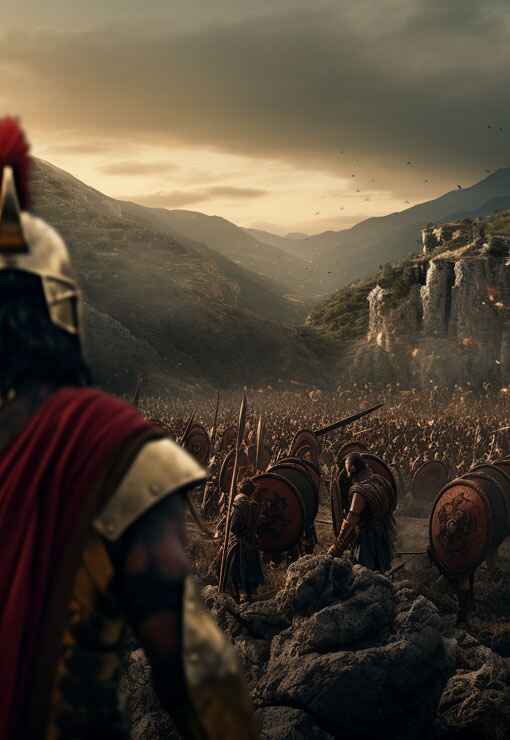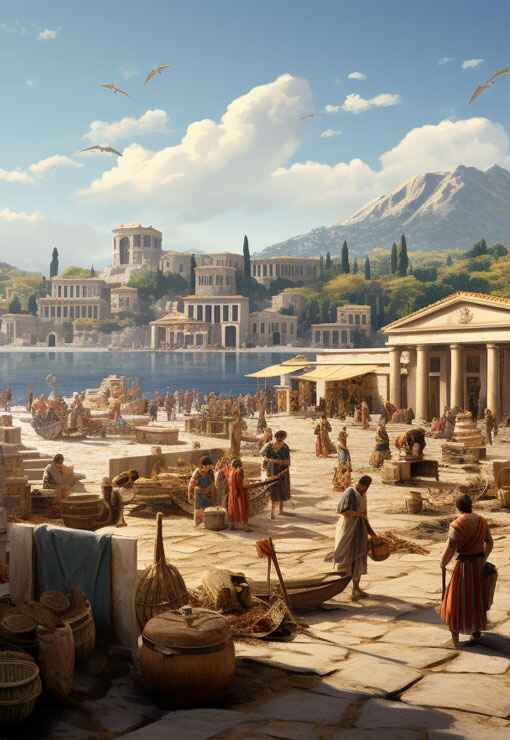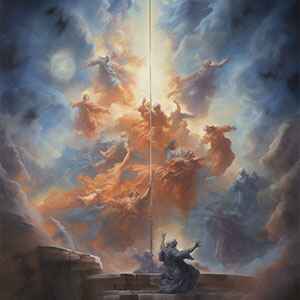Tartarus
In Greek mythology, Tartarus is a primordial deity and a deep abyss that serves as a dungeon of torment and suffering for the wicked. Tartarus is often depicted as both a deity and a place, and its significance extends beyond its role as a prison for certain beings. Here are key aspects of Tartarus in Greek mythology:
Parents: Chaos
Siblings: Gaea, Eros, Erebus, Nyx
Consort: NA
Children: NA

Primordial Origin: Tartarus is considered one of the primordial beings that emerged from Chaos, along with Gaia (Earth), Eros (Love), Erebus (Darkness), and Nyx (Night). It represents the deep, dark abyss beneath the underworld.
Personification of the Abyss: Tartarus personifies a deep and gloomy pit beneath the Earth. It is sometimes described as a chasm that extends as far below the earth as the earth does below the heavens.
Prison for the Titans: After the Titans were defeated in the Titanomachy (the battle between the Titans and the Olympian gods), those who opposed the Olympians were condemned to Tartarus. This included Titans such as Cronus, Iapetus, and others.
Punishment for the Wicked: Tartarus serves as a place of divine punishment for those who committed grave offences against the gods. It is distinct from the more neutral realm of Hades, where the souls of the deceased reside.
Mythological References: Tartarus is mentioned in various myths, including the story of the imprisonment of the Titans and the punishment of certain mortal figures. It is a place associated with divine justice and retribution.
Boundaries of the Underworld: Tartarus is often portrayed as one of the deepest regions of the underworld, serving as a barrier between the realm of the living and the realm of the dead. It is distinct from the Elysian Fields, a more pleasant afterlife for heroes.
Tartarus in Hesiod's "Theogony": Hesiod's "Theogony" provides a detailed account of the cosmogony and the genealogy of the gods. In this work, Tartarus is described as a gloomy place far below the earth, where the most wicked are imprisoned.
Tartarus in Literature: Tartarus appears in various works of ancient Greek literature, including the works of Homer, Hesiod, and later poets. It is often invoked in the context of divine punishment and the consequences of challenging the gods.
Tartarus in Modern Culture: The concept of Tartarus has persisted in modern literature and popular culture. The term is sometimes used metaphorically to describe an abyss of suffering or a place of eternal punishment.
In summary, Tartarus represents both a primordial deity and a deep abyss used as a prison for the wicked, particularly the defeated Titans. It serves as a symbol of divine justice and the consequences of challenging the authority of the gods.
Immediate Family
Quick Facts
- Tartarus emerged from Chaos.
- It serves as a prison for defeated Titans.
- Abyss beneath the underworld.
- Divine punishment for the wicked.
- Distinct from Hades' neutral realm.
- Boundaries of the underworld.
- Described in Hesiod's "Theogony."
- Referenced in various works of literature.
- Persisted in modern culture.
Further Reading
Art &
Architecture
Ancient Greek art and architecture, with its harmonious proportions and timeless elegance, continue to inspire awe and admiration millennia later.
Discover
Greek Mythology & Mythical Characters
Greek mythology, a rich tapestry of gods, heroes, and mythical creatures, captivates the imagination with its tales of love, betrayal, and epic adventures that delve into the depths of the human psyche.
Discover
Ancient Greek History
Ancient Greek history, marked by remarkable achievements in democracy, philosophy, and warfare, shaped the foundation of Western civilization, leaving an indelible legacy of innovation and cultural influence that continues to resonate to this day.
Discover
Ancient Greek Olympics
The ancient Greek Olympics, held in Olympia every four years, celebrated athleticism, unity, and cultural pride, serving as a testament to the enduring spirit of competition and excellence that transcends time and borders.
Discover
Ancient Greek Wars
Ancient Greek wars, such as the Persian Wars and the Peloponnesian War, were pivotal conflicts that shaped the course of history, highlighting the struggle for power, independence, and the clash of civilizations in the ancient Mediterranean world.
Discover
Ancient Greek Culture and Society
Ancient Greek culture and society, characterized by its emphasis on art, philosophy, and civic engagement, fostered a vibrant intellectual and social landscape where innovation flourished, democracy thrived, and the pursuit of knowledge and excellence was celebrated as fundamental values of civilized life.
Discover
